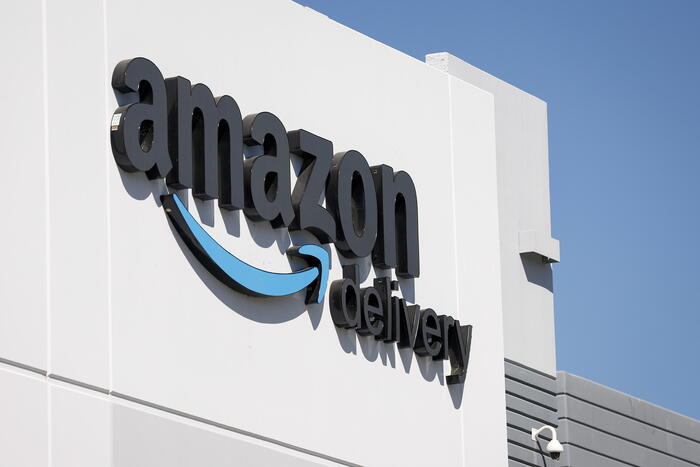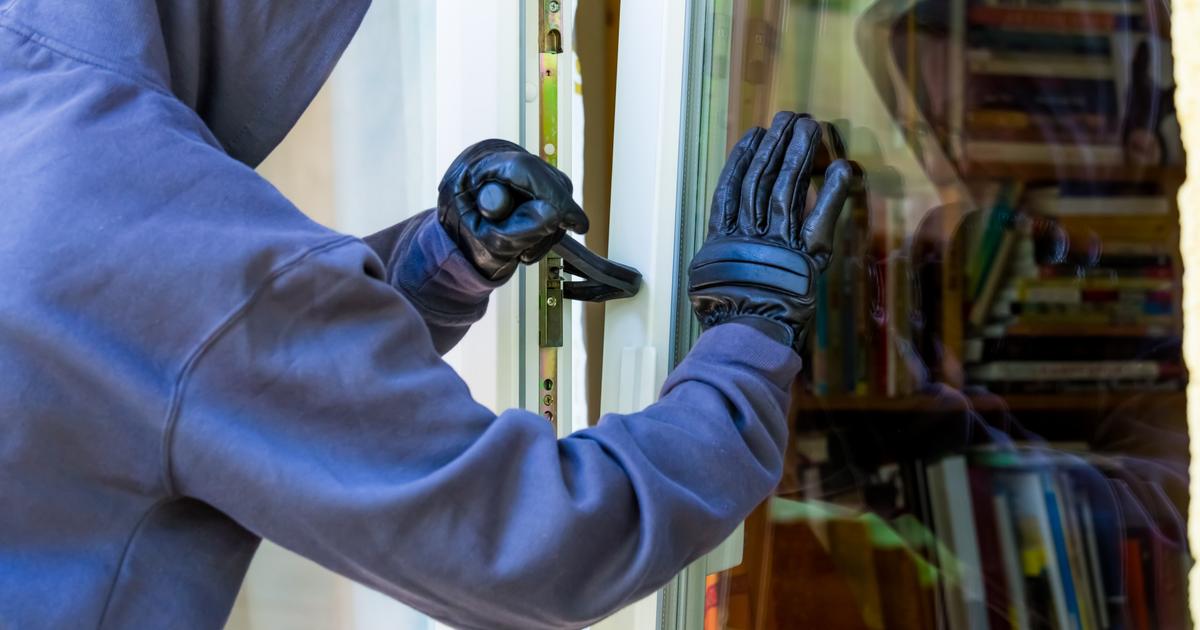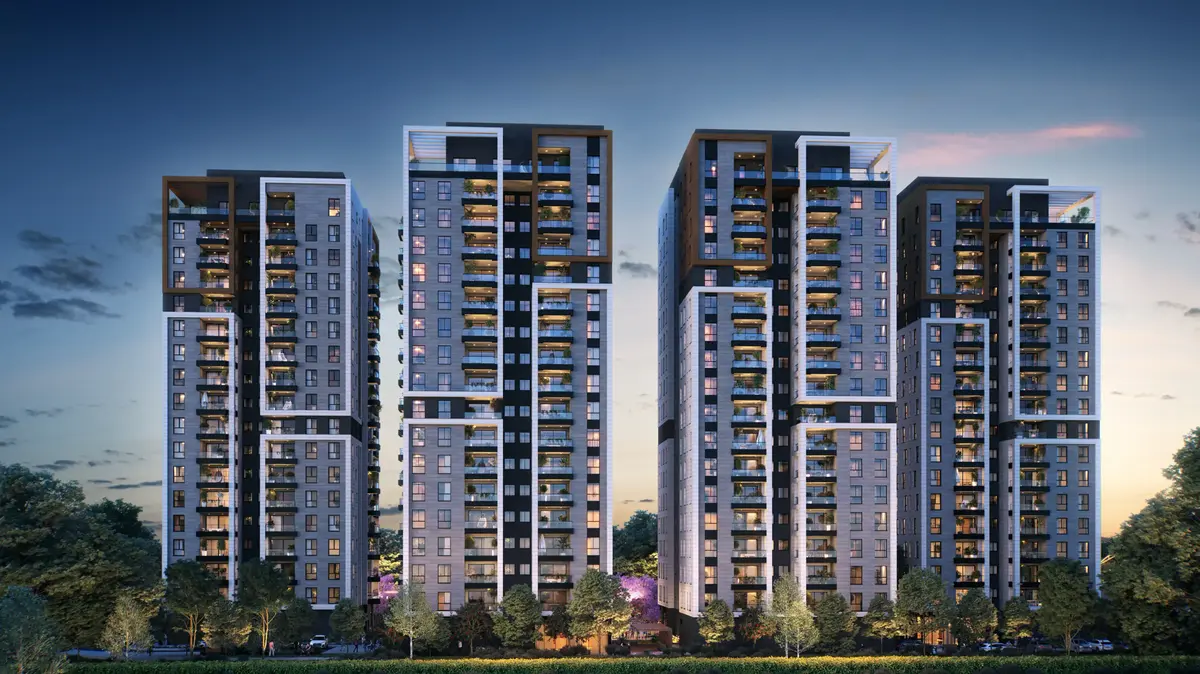They were said to be on the carpet, stunned by deindustrialization, the closure of public services and the decline of local trade. Ringed by metropolises, less authentic than rural communities, medium-sized cities - which have 20,000 to 200,000 inhabitants and where almost a quarter of French people live - are today taking their revenge.
In November 2019, Besançon (Doubs) topped the Jobijoba-Meilleurtaux.com barometer of the most attractive cities in terms of employment and real estate purchasing power. In second position, Orléans (Loiret) offers a very dynamic job market, with 14.4 CDI offers per 100 inhabitants. In this ranking, modest cities like Tours (Indre-et-Loire, ranked 11th) and Dijon (Côte-d'Or, 12th) rub shoulders with giants like Lyon (6th) or Toulouse (16th). Further west, Angers (Maine-et-Loire), which has occupied the top spot in the L'Express ranking of cities where life is good for two years, was designated champion of France in October to invest in rental real estate by Seloger.com.
Henceforth, it is no longer the size that counts. Frightened by the traffic jams of cities and the exorbitant prices per square meter, our compatriots put forward the quality of life. According to the 2019 barometer of the Villes de France association, 43% of French people would prefer to live in an average city (compared to 35% in a rural municipality and 22% in a large city).
“We are finally recognized as territories of the future! enthuses Caroline Cayeux, various right mayor of Beauvais (Oise) and president of this structure which brings together 300 communities. Our municipalities offer many services - high schools, universities, hospitals, theaters, media libraries - in an environment on a human scale and, it is new, an economic fabric that is starting to develop again. "
Admittedly, each case is different and all the chief towns do not turn overnight into dynamic and attractive cities. Thus, according to a report published in January 2019 by the General Commissariat for Equality of Territories, more than a third of 30-39 year olds are living in poverty in a dozen medium-sized cities (Abbeville, Béziers, Carcassonne, Forbach, Laon, Maubeuge, Saint-Quentin, Sedan). But things are moving. In Saint-Quentin (Aisne), public authorities, universities and companies have joined forces to set up a world-class robotics sector in this territory marked by a high unemployment rate.
On the trade side, the government launched Action Coeur de Ville at the end of 2017, a revitalization plan with 5 billion euros over five years. "It was born from a double conviction: medium-sized cities play an irreplaceable role in their territory and, if their hearts do not go, nothing goes," explains Rollon Mouchel-Blaisot, program director. No less than 222 cities benefit from this plan, which has already given rise to concrete achievements, such as the transformation of a wasteland into a multiplex cinema in Lunéville (Meurthe-et-Moselle) or the maintenance of a bookstore in Douai (North ). Illustration also in Arras (Pas-de-Calais), where the municipality is stepping up actions to revitalize the city center.
“It pays me” newsletter
The newsletter that improves your purchasing powerI'm registering
Your email address is collected by Le Parisien to allow you to receive our news and commercial offers. Find out more
At a time of global warming, "medium-sized cities also have a role to play in terms of ecological transition," adds Caroline Cayeux. Their proximity to nature, their size, their ability to make decisions quickly are all assets to set up, for example, projects for short circuits, urban farms or organic canteens. Ambitious, La Rochelle (Charente-Maritime) aims for carbon neutrality by 2040, while Besançon is a pioneer in terms of waste reduction thanks to smart bins and an incentive fee. Approaching the municipal elections of March 15 and 22, travel to an all but sleepy France.
The champion: Angers
Armored doors, cameras and detectors galore, access code and even an airlock to filter entrances like in a bank ... You have to show your white cred to enter the Verisure remote monitoring center, in Angers (Maine-et-Loire) ). Inaugurated last July on the third floor of a building in the Orgemont business district, this ultra-secure room now employs around a hundred people. With 500 employees by 2024, it will be the largest of the three French sites of the company specializing in home alarms, and the second in Europe, after that of Madrid.
“If we chose Angers from a short list of 40 French cities, it is for its dynamism, its quality of life and its attractiveness, explains Pascal Guymard, the site director. The support of local actors in our recruitment, the responsiveness of the Economic Development Agency ( Editor's note: association created by local authorities to help businesses to develop ) and the subsidies were also decisive. "
Verisure is far from the only company to have given in to the "Angevin sweetness" dear to the 16th century poet Joachim du Bellay. In 2018, 19 companies have set up in the area, and are expected to generate 1,700 jobs within five years. Better, according to the Arthur Loyd barometer, 3694 jobs were created there between 2014 and 2018, whereas the city had lost 2183 between 2008 and 2014. Among the conquered entrepreneurs, Samuel Albert, the big winner of the show "Top Chef In 2019. Last November, the cathodic 31-year-old cook opened his first restaurant, Les Petits Prés, place du Ralliement, right next to the Grand Théâtre. Why there? "I have my roots there, but I have above all been convinced by the dynamism of the city in recent years," he explains.
Building on its strengths, such as its horticulture sector organized around the Vegepolys global competitiveness cluster, the region has known how to evolve. "In the 1970s, Angers was a stronghold for electronics," said Sébastien Rospide, director of We Network, which helps companies develop their technology and industry. The Thomson and Bull factories closed, but there remained a large density of subcontractors.
"Thanks to this know-how, we have become a benchmark in terms of connected objects and the electronics industry," explains this ex-Parisian installed at the Technocampus, a space of 8,000 square meters where in particular barded construction shoes were designed. sensors to prevent accidents at work.
Driven by this good economic health, the capital of Anjou is also returning to population growth, after five years in slow motion. According to the last INSEE census, it had 152,960 inhabitants on January 1, 2017, compared to 149,017 in 2012. At 2,055 euros per square meter on average for an apartment, according to Meillagents.com, the price of real estate is attractive.
The neo-Angevins discover a young city (43,000 students), endowed with a teaching hospital, first-rate cultural places, such as the Museum of Fine Arts or the national dance center Le Quai, bars or concert halls . But also a city looking to the future, through renovation projects such as the Cours Saint-Laud, a brand new business district around the TGV station, or the Quai Saint-Serge, a collection of old wasteland industrialists who have been hosting a state-of-the-art ice rink since this summer, while awaiting offices and housing.
In short, a town that moves, far from the image of sleeping sweet that sticks to his skin. “Here, for a long time, the motto was To live happily, let's live hidden. Today, we assume to be proud of our territory ”, assures Christophe Béchu. For the mayor (ex-UMP, ex-LR, today various right), the current dynamic is linked to “an alignment of the stars. In five years, we have taken a moratorium to prohibit the installation of large areas on the outskirts, launched the construction of the new tram line and reworked our communication. At the same time, our football club went back to Ligue 1 in 2015, we received a stage from the Tour de France in 2016, and won, in 2017, the reception of the World Electronics Forum for the first time in France ” , he adds.
No way to give in to the madness of grandeur. “Our challenge is to continue to change while maintaining our quality of life and staying on a human scale. It's a question of balance. Otherwise, beware of the growth crisis.
The most commercial: Arras
Light or triple, regional or international ... The La Capsule menu, in Arras (Pas-de-Calais), offers a long list of craft beers to hop lovers. Since September, this bar with 30 draft beers has taken up residence on rue de la Taillerie, ideally located between the famous Grand-Place and Place des Héros. When Anthony d'Orazio, who already had an establishment in Lille, looked for a city which promised him the same success, he was conquered by Arras. "As soon as the project was presented, the town hall helped and encouraged us," says Louise Descamps, 26, assistant manager.
Commerce has become the priority of Mayor Frédéric Leturque (Les Centristes) since the publication, in 2016, of a worrying figure. Its city of 40,000 inhabitants had 17.5% of empty commercial premises in its center, against a national average of 12%. He then set up a plan called “Pacte pour le commerce” by 2020. “Many tools have been created to boost the sector: an attractiveness fund for merchant associations, a network of economic actors from territory, an observatory. And we have set up a pre-emption right for the town hall, ”explains Nadine Giraudon, assistant in charge of trade.
The work of the Bérénice agency, specializing in commercial architecture, also made it possible to understand the flow of pedestrians in the city and to delimit the merchant hypercentre, "the area in which we had to act as a priority", according to Antoine Cornuel , responsible for the commercial strategy for the town hall. Four years later, the sky is blue in early January 2020, and the results are there. "Since 2016, there have been 225 store openings and 94 store closings," says Antoine Cornuel. The empty store rate fell to 8%, and 80% of the stores that opened during this period are still there today. "
This revival of activity, supported by the government's national action “Coeur Coeur de Ville” plan, is appreciated by historic traders. “Today, a shop that closes is quickly replaced. We are seeing good momentum, ”said Thomas Beaucourt, 41, manager of the Boyaval store, located on rue Emile-Legrelle since 1978.
"To succeed, you need a bit of luck and a real willingness on the part of the economic players," exclaims François Descloquemant, seated at his restaurant Le Saint Germain, on the Grand Place for twenty-seven years. At 67, he is president of the Arras commerce coeur de ville association. And he is proud: “There is a great diversity of brands and a renewal which corresponds to the taste of the day, as much for the inhabitants as for the tourists. "
Arras, tourist destination? The belfry was listed as a UNESCO World Heritage site in 2005, the citadel in 2008. The first was elected favorite monument of the French in 2015, the second hosts the Main Square music festival each summer. The Wellington quarry, a First World War site opened to the public in 2008, has also seen an increase in attendance since the commemorations for the centenary of the Battle of Arras on April 9, 2017. People come from far to discover the country's capital Artois. The New Zealand director of "Lord of the Rings", Peter Jackson, is among the half a million visitors to the site, he has even become one of his ambassadors.
However, there are still black spots, such as these 800 vacancies in the center. "Residential recovery is essential," underlines the deputy mayor, Nadine Giraudon. The inhabitants make the life and the economy of the districts. And in Arras, shops can even attract new residents. Like Louise Descamps, from the La Capsule beer bar, who, seduced by the advantages of the city, left Lille four months ago to move in.
The most pleasant: Pau
The 77 215 Palois can be proud. Tuesday, January 14, Emmanuel Macron lingered in their city to discover the Fébus, the new hydrogen bus deployed in December 2019. 18 m long, this amazing bus-tram is powered by a hydrogen battery, green energy, produced locally, which only releases water vapor. This eco-mobility mode is part of a renovation and innovation policy launched by the municipality to develop its attractiveness.
Since the election of François Bayrou (MoDem) as mayor in 2014, Pau has been the site of major projects. "Actions have been taken with regard to green spaces, with in particular the works at Parc Beaumont, and for the improvement of housing in the city center, with a program to rehabilitate buildings on the Joffre block", points out Rollon Mouchel -Blaisot, director of the national action, heart of town plan.
Garden city, with its 750 ha of green spaces, sporting city, with its whitewater stadium and its love of rugby, stage city of the Tour de France, dynamic city welcoming more than 12,000 students, the capital of Béarn comes out of lot. And to support its community, Pau has implemented an anti-loneliness plan which improves the reception of new inhabitants, offers "shared tables" between French or foreign students and Palois, dancing afternoons, a system of solidarity hitchhiking…
The most dynamic: Chartres
To promote cosmetic perfumery, one of the jewels of the French economy, a prestigious place was needed. The International House of Cosmetics will open its doors in 2022, in Chartres, in a rehabilitated old college, just in front of the Notre-Dame cathedral, listed as World Heritage by Unesco. What further enhance the attractiveness of the prefecture of Eure-et-Loir, dynamic city of more than 40,000 inhabitants and cradle of the technopole of the Cosmetic Valley. Created by professionals in the sector in 1994, it was labeled a National Competitiveness Cluster in 2005.
Today, "half of this French industry, which represents 3,200 companies, 246,000 jobs and an annual turnover of 45 billion euros, is concentrated one hour from Paris between Rouen, Rambouillet, Orléans and Chartres, describes Christophe Masson, director of Cosmetic Valley. Here are gathered the trades of all the sectors of the field: formulas, raw materials, packaging, security controls… ”
The large international groups Coty (Calvin Klein), Reckitt Benckiser (Veet) and Puig (Nina Ricci) are located in Chartres, where Guerlain produces creams and, Dior, perfumes. Behind these manufacturers, a network of VSEs and SMEs makes the Eure-et-Loir prefecture an attractive city, especially for executives and their families.
The most innovative: Saint-Quentin
Computer coding has no secrets for schoolchildren in Saint-Quentin (Aisne), who were introduced to the manipulation of robots from CM1. Struck by deindustrialization, the Picardy city of more than 55,000 inhabitants has bet on technology, by betting, in 2015, on “digital robon”. An innovation sector that combines robotics, the integration of robots in industry and digital technology. “We wanted to keep factories on our territory and create jobs. We rolled up our sleeves to take the right turn ”, explains Frédérique Macarez, who led the development of the sector in the territory, before becoming the mayor (LR) of the city, in 2016.
Emphasis was placed on training and supporting businesses. Some 2,300 students (200 more than last year) are enrolled on the city's university campus, where a full course up to bac + 5 in robotics and embedded systems has been created. “In 2019, 80% of the first graduates of the digital industry master obtained a permanent contract upon leaving. Companies are constantly recruiting, ”continues the councilor.
Several nuggets are developing in the city, including Sylpheo (software development), ClariLog (IT fleet management), which targets the European market, Tesseract Solutions (robotics integration) or Apégélec, specialist in the integration of robots in the industry. . And bring a new wind of dynamism to Saint-Quentin.
The most eco-friendly: Besançon
Portraits of Victor Hugo or Gustave Courbet - local children - Andy Warhol style, flowers and lace patterns ... Last May, the garbage containers in downtown Besançon were decorated by three local artists to encourage 116 000 Bisontins to sort their waste even better. “These facilities are integrated into the city. There are fewer wild deposits. The inhabitants have appropriated them, ”rejoices Marie-Laure Journet-Bisiaux, director of waste management in Grand Besançon, who plans to deploy the entire system (around thirty other sorting points) this year.
A pioneer in ecology - it was notably elected French Capital of Biodiversity 2018 -, Besançon stands out in particular with an innovative waste management system. Voted in 2008, an individualized fee that takes into account the number of garbage bins and their weight was implemented in 2012 to reduce the production of non-recyclable household waste, which goes to the incinerator.
In concrete terms, each gray bin held by an individual in individual accommodation has been equipped with an electronic chip, and each collection bin contains an on-board computer system which makes it possible to weigh the bin and identify the user to be billed. In buildings, where the bins are collective, the trustee or the social landlord pass this cost on to the charges.
A bet: in France, no city of more than 100,000 inhabitants has implemented such a measure. However, it is a success. Between 2008 and 2018, the garbage cans went from 227 kg per year per inhabitant to 148 kg, i.e. a weight loss program of almost 35%.
Added to this are affordable housing, a dynamic job market, a sporting, cultural and intellectual life. We understand that Besançon is the most attractive city in France, according to the Jobijoba- Meilleurtaux.com barometer published last November. "A city on a human scale where life is good," responded the mayor (LREM) of the town, Jean-Louis Fousseret, on France Info.














